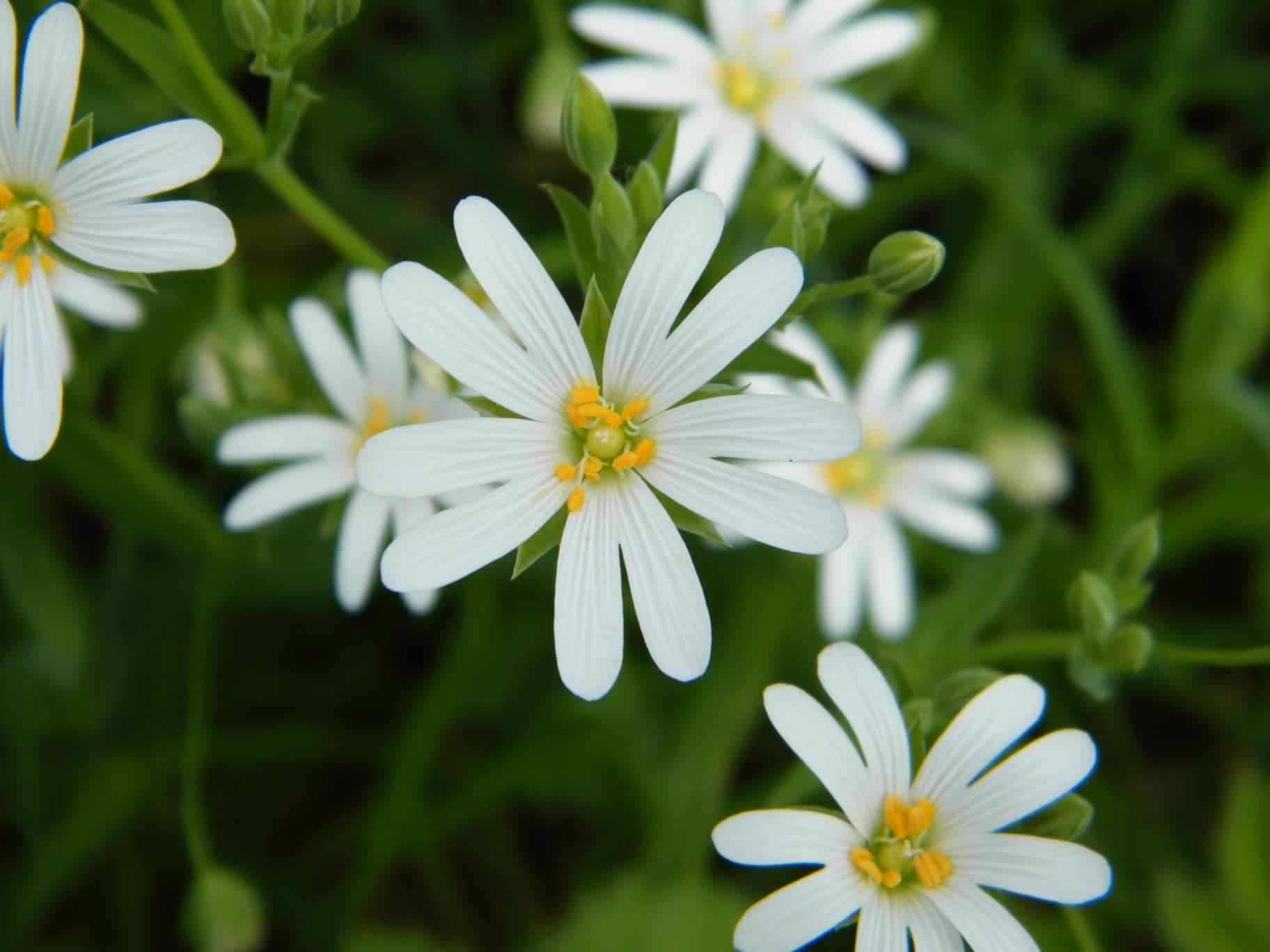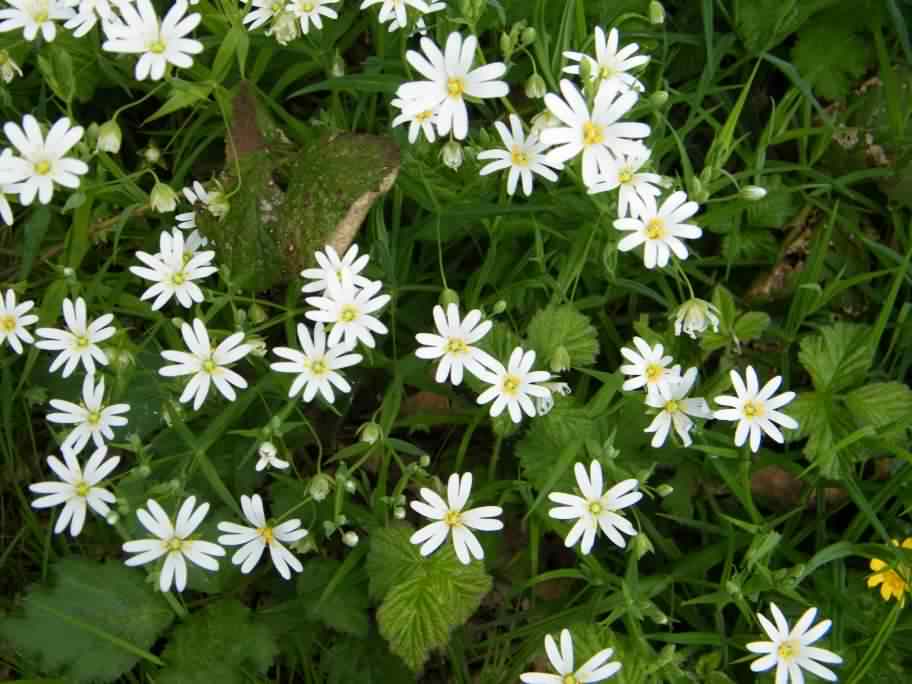
Photos ©2011–
Click any photo for a larger image


Photos ©2011–
Click any photo for a larger image

Greater Stitchwort - Stellaria holostea
Family - Caryophyllaceae
Also known as - Dead Man's Bones
A common and in places abundant spring wildflower found in most of the UK and parts of Europe, in open woods, hedgerows, roadsides and grassy banks, with deciduous narrow to pointed bluish green un–stalked leaves in alternating pairs up the stem, which is weak and brittle. The flowers are 20–30mm across (0.8–1.2in), consisting of five deeply notched white petals with five shorter (about half a petals length) green pointed sepals, on stalks budding from the leaf nodes. Ten stamens 5–10mm (0.2–0.4in) tall with orange anthers. Once seed has been set they are dispersed by an "explosive" system where stresses set up in the seed pod during maturation are released when the pod is disturbed. This straggly plant grows to about 50cm (20in) tall in damp & shady positions with the flowers appearing late March–April to July becoming quite abundant in some areas. The stems are square in cross section, but are relatively weak, gaining some support from surrounding plants. Greater Stitchwort is a nectar source for the Wood White butterfly. See also Lesser Stitchwort which has much smaller flowers with more conspicuous veins.
FBCP do not advise or recommend that Greater Stitchwort – Stellaria holostea is eaten or used as an herbal remedy. "Dead Man's Bones" is the old folk name for this herb which was traditionally used medicinally to cure pains and "stitches".
Site design ©1999– Brickfields Country Park - Privacy -